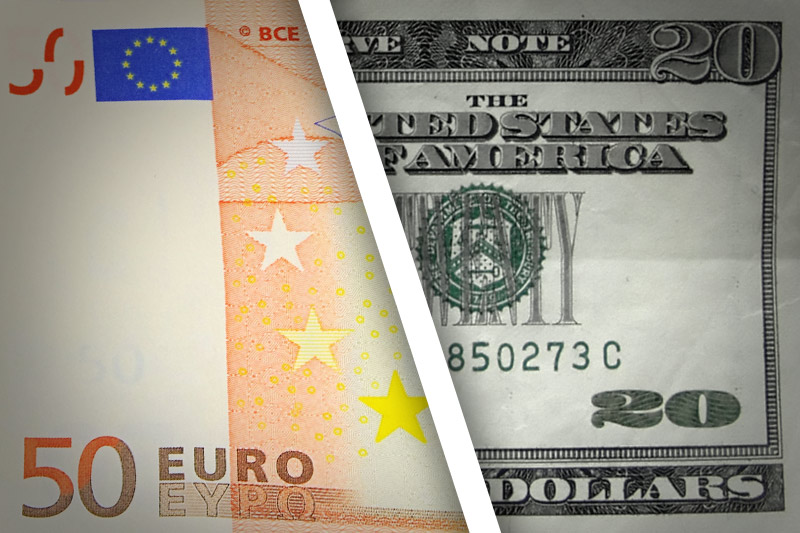Investing.com -- The euro appreciated sharply against the dollar on Tuesday ending a four-session losing streak, as the global bond rout roiled markets for the second straight day.
EUR/USD surged to a session-high of 1.1278 in European morning trading, before currency traders pared some of their gains in U.S. afternoon trading as the pair fell slightly to 1.212, up 0.0975 or 0.51%.
In Europe, yields on 10-Year German bunds soared more than a dozen basis points to 0.73%, extending Monday's sell-off when they rose six basis points from 0.54 to 0.60. Despite ending Tuesday's session slightly lower at 0.68%, the yields still moved more than 14% on the day. Yields on government debt increase when bond prices decrease.
Yields on France 10-Year bonds, meanwhile, rose nine basis points to 0.99% and are now up by 56 basis points over the last month. Bond prices in Italian and Spanish sovereign debt continued to plunge, as the 10-year yields gained 10 and 13 basis points respectively to 1.86 and 1.87%.
As investors departed from a crowded trade in 10-year bunds, they sought refuge in the euro early in Tuesday's session causing the currency to spike against its American counterpart. The euro also received support from positive developments in the Greek debt crisis, after news broke that Athens repaid a €750 million loan to the International Monetary Fund in full before Tuesday's deadline.
Earlier this spring, yields on European sovereign debt fell to record-lows after the start of the European Central Bank's ambitious €60 billion a month quantitative easing program. The yield on 10-year German bunds, for instance, nearly fell into negative territory in late-April before rebounding over the last two weeks. A rise in inflation expectations, surging oil prices and a lack of liquidity in global bond markets is believed to have caused the massive sell-off.
The sell-off spilled into U.S. bond markets on Monday, as yields on 30-Year Treasuries moved above 3% for the first time in 2015 and the yield curve between 5-Year and 30-year Treasuries moved to its steepest level since late last year. On Tuesday, yields on 10-Year Treasuries reached a six-month high at 2.36%, before falling back 10 basis points at the close.
The bond squeeze impacted currencies in Asia, as the Indonesian rupiah fell to its lowest level against the dollar in decades while the Indian rupee dropped to a yearly-low. USD/IDR rose to 13,160 on Tuesday, up more than 1.5% since mid-April. Meanwhile, USD/INR surged to 64.146, up nearly 3% since the start of April. Additionally, the Thai baht fell to 33.734, its weakest level against the dollar since 2009.
